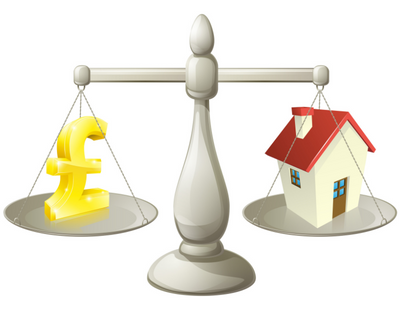
1. Extra mortgage costs
While anyone who owns a property runs the risk of not being able to pay their mortgage, the risks for landlords can be higher. Lenders are aware of this and most tailor their buy-to-let products to cover this, which may mean they ask for a larger deposit - up to 20 per cent rather than the 5 or 10 per cent required for a residential buyer.
Lenders might also set their rates higher for buy-to-let customers and ask for higher fees when they buy the property – including up to two per cent of the value of your mortgage for arrangement fees.
-
2. Set up costs
Before a tenant moves in, there are some basics you need in place - these are the costs of being a landlord you may not expect. Letting agencies may pick up the tab for some of these, but they will no doubt add costs to a landlord’s bill.
- Tenant checks: Tenant references and credit checks, will cost around £400. Landlords also need to register for the Deposit Protection Scheme, which holds on to a tenant’s deposit for the duration of their tenure. Most providers charge a fee that’s a percentage of the deposit – often around 5 per cent.
- Energy Performance Certificate (EPC): Landlords must be aware of the fast-approaching 2025 governmental rule changes surrounding EPC ratings, taking the minimum rating from an E to a C. This will apply to new tenancies from that date and all tenancies in 2028. It is important to start making some improvements now to spread the cost over the next couple of years, especially as fines for not doing this will increase to up to £30,000.
- Gas safety checks: Gas appliances and heating need to be checked by a Gas Safe-registered engineer at least once a year, which costs at least £80 each time.
- Landlord registration: Depending on where the property is, landlords might have to register with their local council. A one-time registration costs between £30 and £80.
- Data Protection registration: As landlords handle their tenant’s personal data, they’re classed as a data controller under the Data Protection Act. By law, this means they need to register the Information to the Commissioner’s Office to process and manage tenants’ data responsibly. Registration costs £40, and this must be renewed yearly.
-
3. Letting agents
If you have more properties, or don’t want to be the first port of call every time there’s a problem, you might want to consider a letting agent.
Letting agents offer a range of services and you can imagine, the end-to-end approach can be pricey – between 10 and 20 per cent of the rental price, which can add a significant amount to the costs of being a landlord - so it’s worth considering which parts of the process you’re happy to manage yourself and where you need help.
4. Maintenance costs
Like any home, a rental property needs regular upkeep and unexpected repairs throughout the course of a tenancy.
There are also some legal requirements for landlords to make sure a property is safe for tenants, including annual gas, fire and electrical safety checks. If your property is furnished, you’ll need to make sure furniture and electrical equipment meets current safety standards.
While a tenant is responsible for tasks like cleaning and general upkeep, the landlord needs to ensure the structure and exterior of the building, is up to standard and any common areas are maintained to a sufficient standard.
-
5. Paying tax
You’ve already paid stamp duty, but don’t forget that any profit you make on renting out your property is subject to income tax. You’ll need to make sure you’ve got money put aside at the end of every financial year to cover your tax bill, which will vary depending on how much money you make.
-
* Tanya Elmaz is Director of Intermediary Sales at Together, and has been a buy to let investor for 30 years *
We're excited to announce that we're working on building a shiny new website for readers of Landlord Today! As part of this process, commenting on articles will be temporarily disabled. We look forward to sharing our new and improved Landlord Today website with you shortly!








.png)

(1).png)










